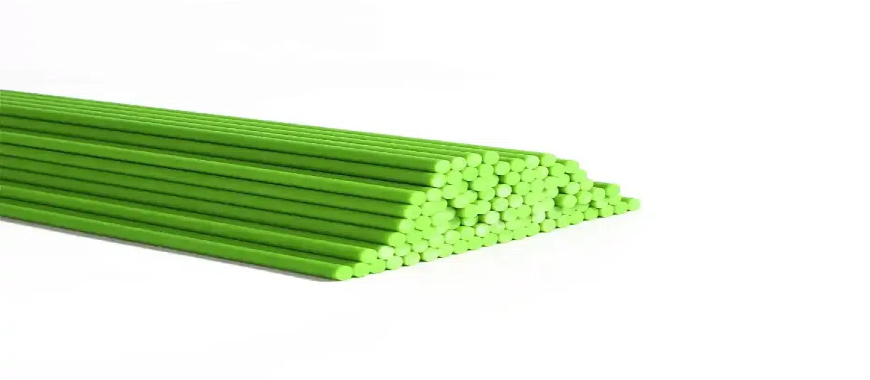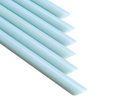
Filling rod holder holes in fiberglass boat is essential for maintaining both the structural integrity and visual appeal of your vessel. These repairs often become necessary when replacing old rod holders, making modifications, or addressing damage caused by wear and tear. Properly filling these holes prevents water intrusion, which can lead to rot or delamination, and ensures your boat remains safe and functional. Additionally, a well-executed repair enhances the boat’s aesthetic, avoiding unsightly patches or irregularities. Whether you’re upgrading equipment or sealing unused openings, taking the time to use the right materials and techniques for filling rod holder holes in fiberglass boat will result in a long-lasting and professional finish that protects your investment.
Filling Rod Holder Holes in Fiberglass Boat: A Comprehensive Guide
Filling rod holder holes in fiberglass boat is a crucial process for maintaining the boat’s structural integrity and ensuring an aesthetically pleasing finish. Whether you’re repurposing old rod holder positions or repairing accidental damage, using the right materials and techniques is essential for a durable and seamless repair. This guide will walk you through the necessary steps, common challenges, and best practices to achieve professional results.
What Are the Best Materials for Filling Rod Holder Holes in Fiberglass Boats?
Choosing the correct materials is the foundation of a successful repair. Fiberglass fillers, epoxy resins, and marine-grade putties are commonly used for this purpose. These materials bond well with fiberglass, providing strength and durability. Marine-Tex is another popular option for its ease of use and compatibility with marine environments.
For larger holes, structural reinforcement with fiberglass cloth or mat is recommended. These reinforcements enhance the repair’s strength, ensuring it can withstand stress and environmental conditions. Additionally, using gel coat or paint to finish the repair helps restore the original appearance of the boat, protecting it from UV rays and water damage.
Step-by-Step Process for Filling Rod Holder Holes in Fiberglass Boat
Preparation of the Area
Start by cleaning the area around the hole. Remove any dirt, grease, or old adhesive using a marine cleaner. Sand the edges of the hole to create a beveled surface, which enhances adhesion and prevents the filler from cracking. Ensure the surface is completely dry before proceeding to the next step.
Choosing the Right Backing
For larger holes, support the repair with a temporary backing material. This prevents sagging during the curing process and ensures the filler stays in place. Materials like tape or a plastic sheet can work as a temporary backing.
Applying the Filler
Mix the chosen fiberglass filler or epoxy resin according to the manufacturer’s instructions. Apply the filler in layers, starting from the center and working outward. Use a putty knife or applicator to press the material firmly into the hole, ensuring there are no air pockets. For deeper holes, allow each layer to cure before applying the next.
Sanding and Shaping
Once the filler has fully cured, sand the repaired area to achieve a smooth surface. Begin with coarse sandpaper and gradually switch to finer grits for a polished finish. Take care to blend the edges of the repair with the surrounding fiberglass for a seamless appearance.
Finishing the Repair
Apply gel coat or paint to match the original finish of the boat. This step not only restores the boat’s appearance but also protects the repair from UV rays and moisture. Allow the coating to cure completely before subjecting the area to water exposure.
Additional Tips for Long-Lasting Repairs
- Use of Backing Materials: For larger holes, backing materials like a plastic sheet provide stability during the repair process, preventing sagging and uneven surfaces.
- Avoid Quick Fixes: While tempting, materials like Bondo are not suitable for marine applications as they lack the durability required for fiberglass repairs.
- Preventative Maintenance: Regularly inspect repaired areas for signs of wear or cracking, addressing any issues promptly to maintain the repair’s integrity.
Common Mistakes to Avoid When Filling Rod Holder Holes in Fiberglass Boats
- Improper Material Selection: Using incompatible materials, such as gel coat with epoxy, can lead to adhesion issues or premature failure. Always verify compatibility before beginning the repair.
- Neglecting Surface Preparation: A dirty or damp surface reduces adhesion, compromising the strength of the repair. Clean and dry the area thoroughly for the best results.
- Skipping Structural Reinforcement: For larger holes, relying solely on filler may result in a weak repair. Adding fiberglass cloth or mat ensures the repair can withstand stress and environmental conditions.
How About Custom Solutions for Filling Rod Holder Holes in Fiberglass Boats?
For boat owners seeking a tailored approach, custom solutions can provide exceptional results. Incorporating fiberglass cloth for added strength or using color-matched gel coat can create a repair that is both durable and visually seamless. These methods allow for greater customization and improved performance.
Real-World Examples of Effective Repairs
- Restoring Old Fishing Boats: Repairing rod holder holes restores functionality and enhances the boat’s appearance, increasing its resale value.
- Adapting Boat Layouts: Filling unused rod holder holes allows for customization, such as adding new accessories or changing the fishing setup.
- Addressing Structural Damage: Repairs with fiberglass reinforcements strengthen the boat’s hull, ensuring it remains seaworthy.
Filling rod holder holes in fiberglass boat requires careful attention to detail and the use of high-quality materials. By following the correct techniques and avoiding common mistakes, you can achieve a durable and aesthetically pleasing repair. At our website, we offer a range of repair products designed to make this process easier, ensuring professional results every time. Share your repair experiences or tips to inspire and assist others in their projects.
How to Apply Fiberglass Boat Water Barrier Coat Effectively
The Key of Filling Rod Holder Holes in Fiberglass Boat
Filling rod holder holes in fiberglass boat is an important task for maintaining the structural strength, waterproofing, and aesthetic integrity of your vessel. Whether you’re repositioning old rod holders, repairing accidental damage, or simply customizing your boat’s layout, a professional-quality repair ensures the boat remains functional and visually appealing. This process involves several critical steps, including choosing the right materials, preparing the surface, and applying proper techniques to create a seamless finish. By investing the time and effort into this repair, you can extend the lifespan of your boat and improve its overall value.
Choosing the Right Materials for Filling Rod Holder Holes in Fiberglass Boat
The materials you choose for filling rod holder holes in fiberglass boat significantly influence the durability and appearance of the repair. Using high-quality, marine-grade materials ensures a long-lasting and reliable outcome, capable of withstanding the harsh marine environment.
One of the most effective options is epoxy resin. Epoxy provides superior bonding strength, making it ideal for structural repairs. It creates a watertight seal that prevents water ingress and adheres well to most surfaces, even in challenging conditions. For non-structural repairs, polyester resin is a budget-friendly alternative that works well with gel coats, though it lacks the durability of epoxy in high-stress areas.
Fillers play a vital role in the repair process, especially for larger holes. Fiberglass fillers such as chopped strand mat or milled fibers add strength and reinforcement, ensuring the repair can handle tension and stress. Thickened epoxy or Marine-Tex is a popular choice for smaller holes, offering easy application and a smooth finish. The combination of resin and filler must be carefully selected to match the specific needs of your repair.
Expert Tips: Can You Use Truck Bed Coating on Fiberglass Boats
Preparing the Surface for Filling Rod Holder Holes in Fiberglass Boat
Surface preparation is a critical step that directly affects the success of the repair. Skipping or rushing this stage can result in weak adhesion, cracks, or an uneven finish, compromising the repair’s durability and appearance.
Begin by thoroughly cleaning the area around the hole. Use a marine-grade cleaner to remove dirt, grease, and other contaminants that could interfere with the bonding process. Sand the edges of the hole to create a beveled surface, which helps the filler adhere securely and prevents cracks from forming. A beveled edge also ensures a smooth transition between the repair and the surrounding fiberglass.
For larger holes, consider using a temporary backing material to support the filler during application. Materials like a plastic sheet or tape can prevent sagging and create a stable surface for the repair. Once the surface is clean, dry, and prepared, you’re ready to begin the filling process.
Filling the Holes in Fiberglass Boat: Techniques for Different Sizes
The process of filling rod holder holes in fiberglass boat varies depending on the size of the hole. Both small and large holes require specific techniques to ensure a secure and seamless repair.
Small Holes (Screw Holes)
For smaller holes, such as screw holes, a straightforward approach is often sufficient. Mix a two-part epoxy or filler according to the manufacturer’s instructions. Use a syringe or small applicator to apply the filler precisely into the hole, minimizing air pockets. Tape the underside of the hole to prevent the material from seeping through during application. Once the filler is in place, smooth the surface with a putty knife and allow it to cure fully.
Larger Holes (Rod Holder Openings)
Larger holes, such as those left by rod holders, require more extensive repairs to restore the boat’s structural integrity. Begin by cutting a core plug from wood or foam to fit the hole. Secure the plug with thickened resin, ensuring it is stable and flush with the surrounding surface. Layer fiberglass cloth over the plug, saturating it with epoxy resin for added strength. Repeat this step as needed to build up the layers, creating a robust and watertight repair.
Sanding and Finishing the Repair
Sanding and finishing are crucial for achieving a seamless appearance and protecting the repair from environmental factors. Proper sanding removes excess filler, smooths the surface, and ensures the edges blend with the surrounding fiberglass.
Start with coarse sandpaper (80 grit) to shape the repair and remove any uneven material. Gradually move to finer grits (120–320 grit) to achieve a polished surface. Pay special attention to the edges to ensure they are flush with the boat’s original surface.
Once the sanding is complete, apply a layer of gel coat or marine-grade paint over the repaired area. This not only restores the boat’s appearance but also provides UV protection and waterproofing. Wet sand the surface with fine-grit sandpaper for a smooth finish, and polish to enhance the shine and match the surrounding fiberglass.
Common Mistakes to Avoid When Filling Rod Holder Holes in Fiberglass Boat
Even with careful planning, certain mistakes can undermine the quality of the repair. Being aware of these common pitfalls can help you avoid unnecessary complications and achieve better results.
One of the most frequent mistakes is improper material selection. Using incompatible materials, such as gel coat over unprimed epoxy, can result in peeling, cracking, or weak adhesion. Always verify the compatibility of your materials before beginning the repair.
Neglecting surface preparation is another common issue. A dirty or damp surface reduces the effectiveness of the filler, leading to weak bonds and potential failure. Thoroughly cleaning and drying the area is essential for strong adhesion.
For larger holes, skipping structural reinforcement can lead to a weak repair. Fillers alone may not provide the necessary strength, so using fiberglass cloth or mat is essential for maintaining the boat’s integrity.
Why Filling Rod Holder Holes in Fiberglass Boat Matters
Filling rod holder holes in fiberglass boat is not just a cosmetic task—it’s a vital step in maintaining the boat’s overall safety and functionality. Properly repairing these holes prevents water intrusion, which can weaken the fiberglass and lead to costly damage over time. Additionally, a seamless repair enhances the boat’s appearance, preserving its value and ensuring it remains a source of pride for its owner.
By investing time and effort into this process, you’re protecting your boat from structural and aesthetic deterioration. Using high-quality materials and following the correct techniques ensures the repair will stand up to the challenges of marine environments. Whether you’re preparing for a new rod holder installation or simply restoring your boat’s surface, this guide provides the knowledge needed for a professional-grade repair.
At our website, we offer premium repair kits and materials designed specifically for fiberglass boats. Each product is tested for quality and durability, ensuring you have the tools needed to complete your repair with confidence. Explore our range today and take the first step toward restoring your boat to its full potential.
How to Apply Fiberglass Drift Boat Bottom Coating Effectively
FAQs about Filling Rod Holder Holes in Fiberglass Boat
Filling rod holder holes in fiberglass boat is an essential repair to maintain the integrity of the boat and prevent water damage. The process begins with cleaning the area around the hole to remove dirt, grime, or old adhesive that might interfere with the repair. Once cleaned, use a marine-grade filler or epoxy resin to fill the hole. Ensure the filler is mixed according to the manufacturer’s instructions and applied evenly. For larger holes, you may need to insert a fiberglass cloth or mat inside the hole for added strength and reinforcement. Smooth the surface with a putty knife, ensuring it’s flush with the surrounding fiberglass. After the filler cures, sand it down to create a smooth, level surface. Once dry, you can paint or gel coat over the area to match the rest of the boat. It’s crucial to allow sufficient curing time before exposing the repair to water. Regular inspection of the filled areas is recommended to ensure they remain watertight.
Storing fishing rods properly on a boat is crucial to keeping them in good condition and preventing damage. There are various ways to store a fishing rod, with the most common being rod holders. These holders are mounted on the boat and can keep rods secure while you’re not using them. They are available in several styles, including flush-mount, vertical, and horizontal designs. Another option is a rod rack, which can be placed in an easily accessible location, like the deck or cabin, and is ideal for keeping rods organized. For additional safety, make sure the rod holders or racks are mounted securely, preventing rods from slipping out or getting damaged by rough waters. Some anglers also use rod leashes or bungee cords to ensure rods stay in place, particularly in choppy conditions. If you don’t have rod holders, storing rods in a soft or hard rod case inside the boat is also an option, especially when the boat is not in use.
A rod holder on a boat is a device designed to securely hold fishing rods while not in use, freeing up space and hands for other activities. These holders are typically mounted onto the boat’s deck, gunnels, or transom, providing a stable and accessible place to store rods while fishing. Rod holders come in various styles, such as flush-mount, which sit level with the surface of the boat, and vertical or horizontal mounts, which are ideal for securing rods during travel or fishing. Some rod holders feature adjustable angles, allowing the user to position the rod in the most convenient position, whether for trolling, casting, or storage. Rod holders are particularly important for anglers who use multiple rods, as they help organize the space and prevent tangling or damage. Additionally, high-quality rod holders are typically made of durable materials like stainless steel or heavy-duty plastic, ensuring they can withstand harsh marine environments.

As the editor of GangLong Fiberglass, I have years of experience and in-depth research, focusing on cable tray products, fiberglass solutions, and grille systems. I incorporate years of industry insights and practical experience into every content, committed to promoting the progress of the industry. At GangLong Fiberglass, my commitment is reflected in every product, from innovative cable trays to durable fiberglass solutions and sturdy grille systems. As an authoritative voice in the industry, my goal is to provide valuable information to professionals and businesses and promote forward-looking solutions.


